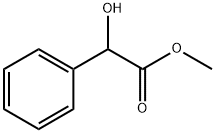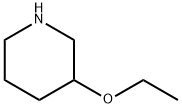(R)-(-)-3-QUINUCLIDINYL BENZILATE
- CAS NO.:62869-69-6
- Empirical Formula: C21H23NO3
- Molecular Weight: 337.41
- MDL number: MFCD00085375
- SAFETY DATA SHEET (SDS)
- Update Date: 2023-06-27 08:28:14

What is (R)-(-)-3-QUINUCLIDINYL BENZILATE?
Chemical properties
Quinuclidinol benzilate (QNB) aka BZ, is a white crystalline solid. Odorless to fruitlike.
The Uses of (R)-(-)-3-QUINUCLIDINYL BENZILATE
(R)-(-)-3-Quinuclidinyl benzilate is a pharmacological agent used as muscarinic M3 antagonist for the inhaled treatment of chronic obstructive pulmonary disease (COPD).
What are the applications of Application
(R)-(?)-3-Quinuclidinyl benzilate is a highly potent enantiomeric version of QNB
Potential Exposure
Suspected reprotoxic hazard, drug; incapacitating agent. QNB is a glycolate anticholinergic compound that affects the CNS and peripheral nervous sys- tem (PNS) and is related to the drugs atropine, scopol- amine, and hyoscyamine. QNB is nonirritating; symptoms are delayed for several hours. QNB can be used to contami- nate water, food, and agricultural products. A highly potent drug and CNS depressant, QNB is a delayed-action inca- pacitating agent, usually dispersed as an aerosol, but it can also be used to penetrate skin when mixed with a solvent (such as DMSO), and to contaminate food and water. QNB appears to be widely used in pharmacologic research. The key to protection from QNB is prevention from entering the body with good quality aerosol filter and impermeable gloves and clothing. QMB is stable in most solvents, with a half-life of 3 to 4 weeks in moist air; it can be dispersed even with heat-producing munitions.
Shipping
UN2810 Toxic liquids, organic, n.o.s., Hazard Class: 6.1; Labels: 6.1-Poisonous materials, Technical Name Required. Military driver shall be given full and complete information regarding shipment and conditions in case of emergency. AR 50-6 deals specifically with the shipment of chemical agents. Shipments of agent will be escorted in accordance with AR 740-32.
Incompatibilities
May form explosive mixture with air. Decomposes at about 170℃ in air under prolonged heat- ing. After 1 or 2 hours at 200℃, it is completely decom- posed. Rate of decomposition is both temperature- and purity dependent. No effect on steel or stainless steel after 3 months @ 71℃. Aluminum and anodized aluminum are mildly attacked after 3 months @ 71℃. Incompatible with oxidizers (chlorates, nitrates, peroxides, permanga- nates, perchlorates, chlorine, bromine, fluorine, etc.); con- tact may cause fires or explosions. Keep away from alkaline materials, strong bases, strong acids, oxoacids, epoxides. Contact with metals may evolve flammable hydrogen gas
Waste Disposal
Dispose of the material per IAW waste disposal methods provided below. Conduct general area monitoring with an approved monitor to con- firm that the atmospheric concentrations do not exceed the airborne exposure limit. If 10 wt.% sodium hydroxide is not available then the following decontaminants may be used instead and are listed in order of preference: Decontaminating Solution No. 2 , sodium carbonate and Supertropical Bleach Slurry (STB). Keep this chemical out of a confined space, such as a sewer, because of the possibility of an explosion, unless the sewer is designed to prevent the build-up of explosive concentrations. It may be necessary to contain and dispose of this chemical as a hazardous waste. If material or con- taminated runoff enters waterways, notify downstream users of potentially contaminated waters. Contact your local or federal environmental protection agency for specific recommendations. If employees are required to clean-up spills, they must be properly trained and equipped. OSHA 1910.120(q) may be applicable.
Properties of (R)-(-)-3-QUINUCLIDINYL BENZILATE
| storage temp. | 2-8°C |
Safety information for (R)-(-)-3-QUINUCLIDINYL BENZILATE
| Signal word | Danger |
| Pictogram(s) |
 Skull and Crossbones Acute Toxicity GHS06 |
| GHS Hazard Statements |
H301:Acute toxicity,oral H311:Acute toxicity,dermal H331:Acute toxicity,inhalation |
| Precautionary Statement Codes |
P261:Avoid breathing dust/fume/gas/mist/vapours/spray. P280:Wear protective gloves/protective clothing/eye protection/face protection. P311:Call a POISON CENTER or doctor/physician. P301+P310:IF SWALLOWED: Immediately call a POISON CENTER or doctor/physician. |
Computed Descriptors for (R)-(-)-3-QUINUCLIDINYL BENZILATE
New Products
(S)-3-Aminobutanenitrile hydrochloride 4-Methylphenylacetic acid N-Boc-D-alaninol N-BOC-D/L-ALANINOL Tert-butyl bis(2-chloroethyl)carbamate 3-Morpholino-1-(4-nitrophenyl)-5,6-dihydropyridin- 2(1H)-one Furan-2,5-Dicarboxylic Acid Tropic acid 1-Bromo-3,5-Di-Tert-Butylbenzene S-2-CHLORO PROPIONIC ACID ETHYL ISOCYANOACETATE 2-Bromo-1,3-Bis(Dimethylamino)Trimethinium Hexafluorophosphate 4-IODO BENZOIC ACID 3-NITRO-2-METHYL ANILINE 1-(2,4-DICHLOROPHENYL) ETHANAMINE (2-Hydroxyphenyl)acetonitrile 4-Bromopyrazole 2-(Cyanocyclohexyl)acetic acid 4-methoxy-3,5-dinitropyridine 1-(4-(aminomethyl)benzyl)urea hydrochloride 2-aminopropyl benzoate hydrochloride diethyl 2-(2-((tertbutoxycarbonyl)amino) ethyl)malonate tert-butyl 4- (ureidomethyl)benzylcarbamate Ethyl-2-chloro((4-methoxyphenyl)hydrazono)acetateRelated products of tetrahydrofuran
![N-METHYL L-QNB, [N-METHYL-3H]-](https://img.chemicalbook.in/StructureFile/ChemBookStructure2/GIF/CB1689129.gif)
![L-QUINUCLIDINYL BENZILATE, [BENZYLIC-4,4'-3H(N)]](https://img.chemicalbook.in/StructureFile/ChemBookStructure2/GIF/CB3136773.gif)






You may like
-
 2033-24-1 98%View Details
2033-24-1 98%View Details
2033-24-1 -
 42831-50-5 5-METHYLISOXAZOLE-4-CARBOXYLIC ACID 98%View Details
42831-50-5 5-METHYLISOXAZOLE-4-CARBOXYLIC ACID 98%View Details
42831-50-5 -
 1975-50-4 98%View Details
1975-50-4 98%View Details
1975-50-4 -
 2-HYDROXY BENZYL ALCOHOL 98%View Details
2-HYDROXY BENZYL ALCOHOL 98%View Details
90-01-7 -
 2-Chloro-1,3-Bis(Dimethylamino)Trimethinium Hexafluorophosphate 221615-75-4 98%View Details
2-Chloro-1,3-Bis(Dimethylamino)Trimethinium Hexafluorophosphate 221615-75-4 98%View Details
221615-75-4 -
 61397-56-6 CIS BROMO BENZOATE 98%View Details
61397-56-6 CIS BROMO BENZOATE 98%View Details
61397-56-6 -
 14714-50-2 (2-Hydroxyphenyl)acetonitrile 98+View Details
14714-50-2 (2-Hydroxyphenyl)acetonitrile 98+View Details
14714-50-2 -
 118753-70-1 98+View Details
118753-70-1 98+View Details
118753-70-1